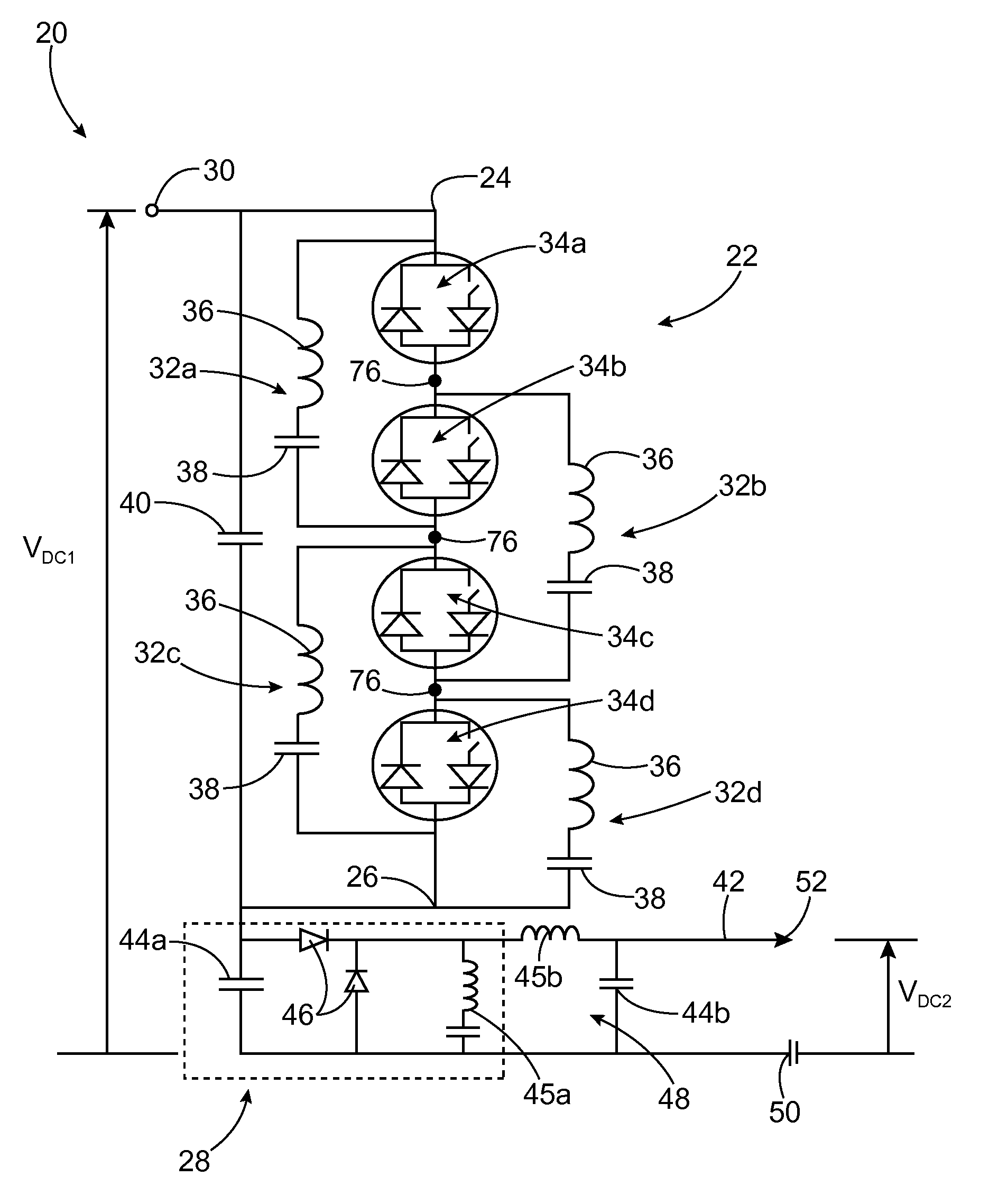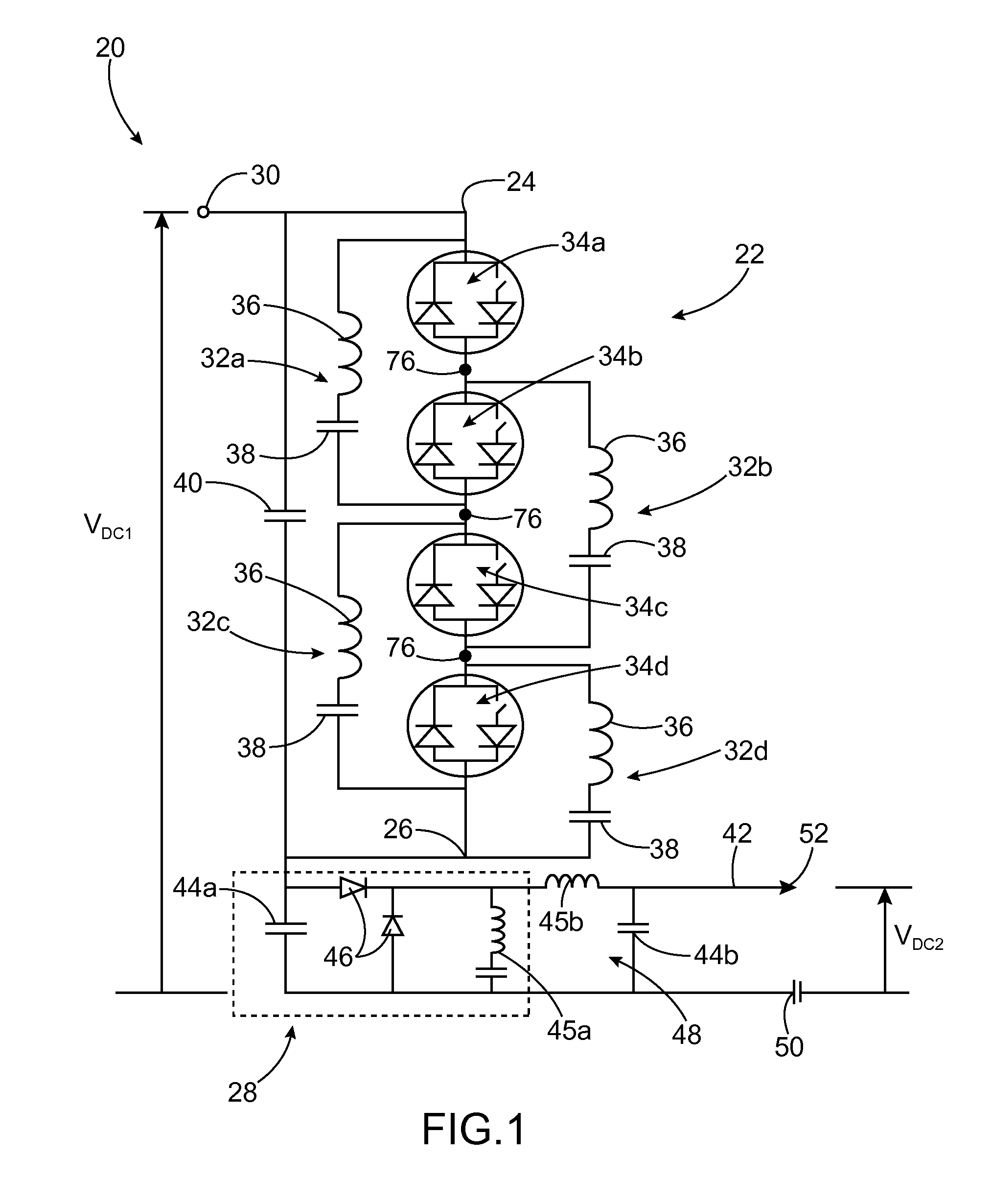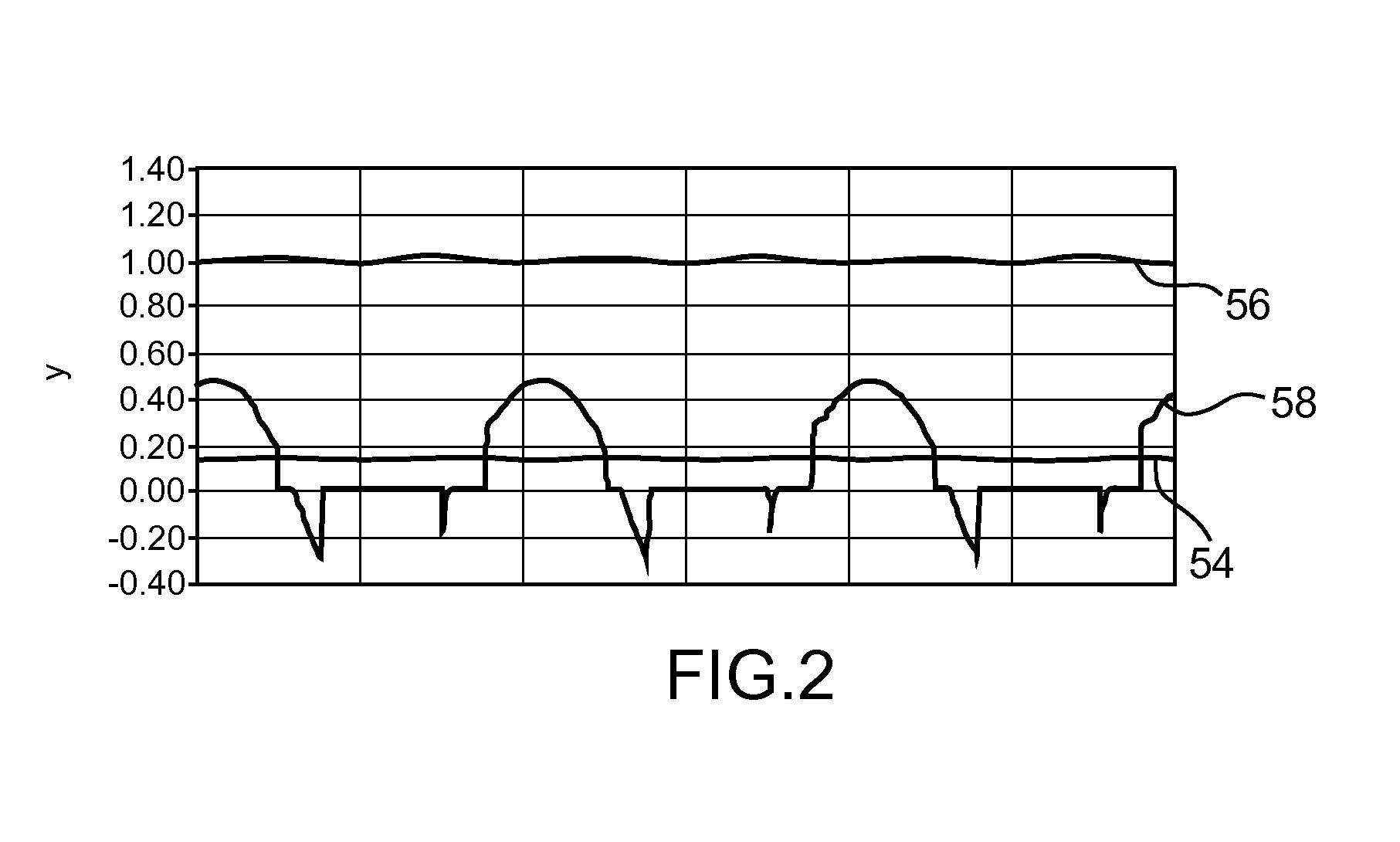High Voltage DC/DC Converter With Cascaded Resonant Tanks
a resonant tank and high-voltage technology, applied in the field of converters, can solve the problems of increasing reducing the overall size and weight of the power converter and power station, and difficult interconnection of the dc transmission and distribution network to form a dc power grid
- Summary
- Abstract
- Description
- Claims
- Application Information
AI Technical Summary
Benefits of technology
Problems solved by technology
Method used
Image
Examples
first embodiment
[0063]A converter 20 according to the invention is shown in FIG. 1. The converter 20 could be considered a Resonant Charge Transfer Converter because of the manner in which functions, as set out below. For the sake of conciseness, however, it will be referred to as a converter throughout this specification.
[0064]The converter 20 comprises a primary charge transfer converter 22 having a first primary terminal 24 and a second primary terminal 26. The converter 20 also includes an auxiliary unit 28 which is connected to the second primary terminal 26 of the primary charge transfer converter 22.
[0065]The first primary terminal may be connected in use to a first DC network 30 which carries a first DC voltage, VDC1. The first primary terminal 24 may be connected to the first DC network 30 via one or more inductors (not shown).
[0066]The primary charge transfer converter 22 includes first, second, third and fourth charge transfer elements 32a,32b,32c,32d which are connected with first, seco...
second embodiment
[0123]A converter 80 according to the invention is shown in FIG. 5.
[0124]The second converter 80 shown in FIG. 5 is similar to the first converter 20 shown in FIG. 1 and like features have the same reference numerals. However, two ways in which the second converter 80 differs from the first converter 20 is that each primary switching element 34a, 34b, 34c, 34d is a single diode switch and the auxiliary unit 28 defines a charge generator in the form of an oscillator circuit 70.
[0125]In alternative arrangements of the second converter 80 (not shown) the single diode switch can be replaced by another switch arrangement such as, for example, an IGBT arranged in parallel with a diode but with the IGBT switched off.
[0126]The oscillator circuit 70 includes an auxiliary switch 72 and a passive circuit 74 tuned to the resonant frequency of the resonant circuits. The oscillator circuit 70 further includes a filter 48 connected to the auxiliary terminal 42 and a connection to ground 50.
[0127]I...
third embodiment
[0159]FIG. 8 shows a first converter assembly 100 according to the invention.
[0160]The first converter assembly includes a converter 20;80 in which the first primary terminal 24 is connected to a positive terminal of a first DC network 30 while the auxiliary terminal 42 is connected to a negative terminal of the first DC network 30.
[0161]A plurality of secondary terminals 76 are connected to positive, negative and ground terminals of a second DC network 52.
[0162]Such a converter assembly 100 permits power conversion between different bipole DC networks 30,52.
PUM
 Login to View More
Login to View More Abstract
Description
Claims
Application Information
 Login to View More
Login to View More - R&D
- Intellectual Property
- Life Sciences
- Materials
- Tech Scout
- Unparalleled Data Quality
- Higher Quality Content
- 60% Fewer Hallucinations
Browse by: Latest US Patents, China's latest patents, Technical Efficacy Thesaurus, Application Domain, Technology Topic, Popular Technical Reports.
© 2025 PatSnap. All rights reserved.Legal|Privacy policy|Modern Slavery Act Transparency Statement|Sitemap|About US| Contact US: help@patsnap.com



